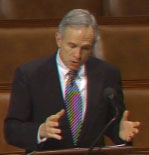 A couple of days ago, I told you about a biodiesel motorcycle that will try to set a speed record that will be featured at the upcoming National Biodiesel Conference & Expo (Feb. 4th-7th in San Antonio, TX). Now, a British racing team says it will put a prototype 100% biodiesel engine into its car competing in the British Touring Car Championship. UK-based Crash.net reports the Scott Racing Ltd car will run on a partial biodiesel mix this coming season, switching to 100% in 2008:
A couple of days ago, I told you about a biodiesel motorcycle that will try to set a speed record that will be featured at the upcoming National Biodiesel Conference & Expo (Feb. 4th-7th in San Antonio, TX). Now, a British racing team says it will put a prototype 100% biodiesel engine into its car competing in the British Touring Car Championship. UK-based Crash.net reports the Scott Racing Ltd car will run on a partial biodiesel mix this coming season, switching to 100% in 2008:
“Most of the existing cars run on petrol with a few on bioethanol – no-one has yet run a fully-biodiesel powered car, as technically it is very challenging,” company managing director and former Formula Ford 1600 driver Tim Scott said. “I’m passionate about motor sport and I think we can make a diesel car competitive in the short term and gradually ramp up the percentage of biodiesel in the fuel to make a competitive biodiesel touring car next year.”
Of course, they plan to run the car on locally produced biodiesel.


 A word that few people even knew just five years ago when the last farm bill was written is all over the Bush administration’s
A word that few people even knew just five years ago when the last farm bill was written is all over the Bush administration’s 
 The
The  Also in Daytona to watch the test was Dan Schwartzkopf, senior vice president of
Also in Daytona to watch the test was Dan Schwartzkopf, senior vice president of 

 The
The  Among those who testified was
Among those who testified was  As farmers start to make planting decisions for the coming year, many with an eye towards increased corn acreage to meet the demand for ethanol, seed companies are promoting varieties that have traits best suited for ethanol production.
As farmers start to make planting decisions for the coming year, many with an eye towards increased corn acreage to meet the demand for ethanol, seed companies are promoting varieties that have traits best suited for ethanol production. The head of the
The head of the  Jobe went on to say that he was encouraged that in the Democrat response, the new leaders indicated they wanted to work with Bush on energy issues. He added that this plan differed than those in the past in that it was more of a comprehensive energy plan implementing alternative fuels with conservation measures. “There really is no single, silver bullet. It’s going to take more of a silver buckshot approach to resolve our energy issues.”
Jobe went on to say that he was encouraged that in the Democrat response, the new leaders indicated they wanted to work with Bush on energy issues. He added that this plan differed than those in the past in that it was more of a comprehensive energy plan implementing alternative fuels with conservation measures. “There really is no single, silver bullet. It’s going to take more of a silver buckshot approach to resolve our energy issues.”